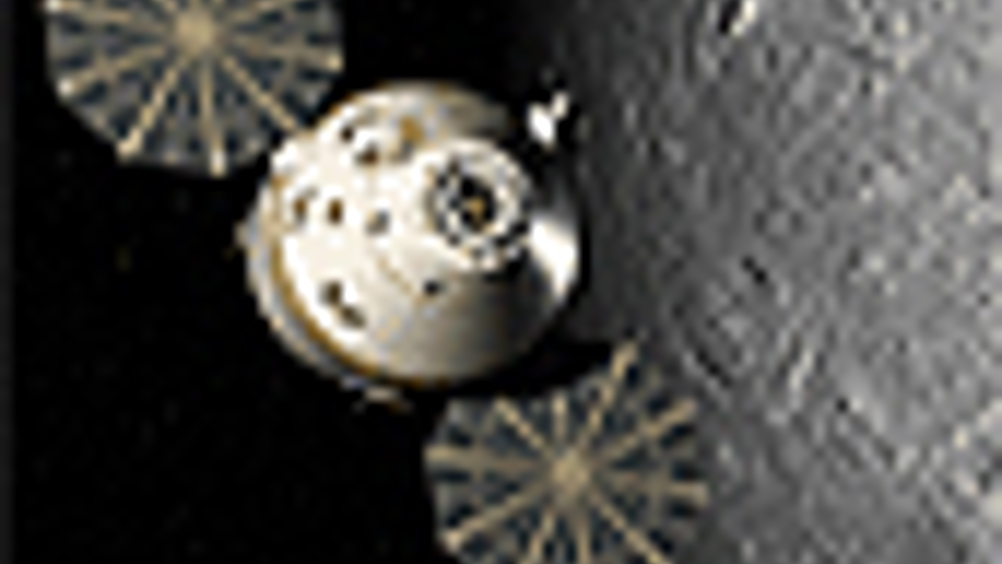Friends in high places
As a new manned ‘space race’ gets underway, Europe chooses a partnership of equals with Russia over a junior role with NASA. George Coupe reports

The space race could be on again as the US, Europe, Russia, China, Japan, India and possibly even the UK plan to launch a new generation of astronauts into space.
On the 50th anniversary of Sputnik I’s first orbit of the Earth, Russia is set to take centre stage again. It seems increasingly likely that Europe will link with Russia, not the US, for its next big push into space, despite icier political relations between Moscow and the West.
The future of manned spaceflight and exploration looked in doubt several years ago, when the cost and risk to life seemed unacceptable and robots were the preferred option. But, just as the Earth is drawn inexorably closer to the Sun, so the desire to send humans back into space has gripped the world again.
The senior players have advanced plans to return to the Moon and eventually set foot on Mars. In the UK, a recent report commissioned by the British National Space Centre (BNSC) said the UK should discard its long-held policy of non-involvement in human space flight and even consider paying the Russians to take Britons into space.
Most proposals for new spacecraft and lunar bases floated so far have appeared under the banner of international co-operation, following the establishment of the Global Exploration Strategy. International co-operation is and will remain vital to the future of space exploration, especially in putting together manned missions, because the funding problems have not gone away.
But behind the show of co-operation, the space community is also speaking the language of the race. UK scientists once committed to robotic exploration said last month that the UK should ‘catch up’ with human spaceflight, and not get ‘left behind’. They asked: ‘Do we want to lead or are we just going to follow?’
So what has caused this change? One of the catalysts is, paradoxically, the International Space Station (ISS), itself the embodiment of international space co-operation.
The construction, servicing, supply and crewing of the station has been a shared responsibility, not to say a burden, for its partners. As the Shuttle fleet nears retirement in 2010 and the Soyuz gets in ever greater need of further upgrade, NASA, ESA and the Russian federal space centre Roskosmoshave had to address the question of how to keep supplying the ISS and, crucially, transport crew to and from the station.
This presented the opportunity to consider building extra capabilities to any future spacecraft. Almost overnight, as the US announced Orion, which will be capable of transferring crew to the ISS and supporting manned Moon and Mars missions, Europe and Russia started talks on a possible rival system, now designated the Crew Space Transportation System, CSTS.
The CSTS represents a new kind of partnership between Europe and Russia in space technology. It will be a jointly built, owned and potentially jointly operated human spaceflight system.
The project has already broken new ground: the potential industrial partners for both sides met in Moscow for the first time last month and are now finalising the selection criteria for the new spaceship. The partners include EADS Astrium, Thales Alenia Space and the Russian Soyuz manufacturer RKK Energia.
Jeremy Close, a spokesman for EADS Astrium, spoke to The Engineer after the meeting. ‘These are part of ongoing discussions about mission requirements, including architectural options,’ he said. ‘We are looking to have the selection criteria finalised in the next month or so. A two-step approach for CSTS would look at modifying and adapting the current Soyuz spacecraft and then look at new developments.’
He said the company could not give more specific details on the possible technologies but said its contribution to ESA’s new cargo vessel for the ISS, the Automated Transfer Vehicle, which is due to make its first flight next year, would be of benefit to the project.
The ESA/Roskosmos partnership, if successful, will represent a new co-operation in space, but it is also expedient for both sides.
Jean-Jacques Dordain, ESA director general, recently described Europe’s reliance on the US to get into space in the future as a problem of ‘single-point failure’. While it would make obvious practical sense to have an alternative means of reaching the ISS, this was also a diplomatic way of saying that Europe wanted its independence.
And with Russia, Europe would be an equal partner in the CSTS, as Manuel Valls, who is in charge of ESA’s role in the project, told The Engineer. He said Europe ‘would not be a junior partner’, and would no longer have to go cap in hand for seats on a US crew transport.
Register now to continue reading
Thanks for visiting The Engineer. You’ve now reached your monthly limit of premium content. Register for free to unlock unlimited access to all of our premium content, as well as the latest technology news, industry opinion and special reports.
Benefits of registering
-
In-depth insights and coverage of key emerging trends
-
Unrestricted access to special reports throughout the year
-
Daily technology news delivered straight to your inbox










UK Enters ‘Golden Age of Nuclear’
The delay (nearly 8 years) in getting approval for the Rolls-Royce SMR is most worrying. Signifies a torpid and expensive system that is quite onerous...